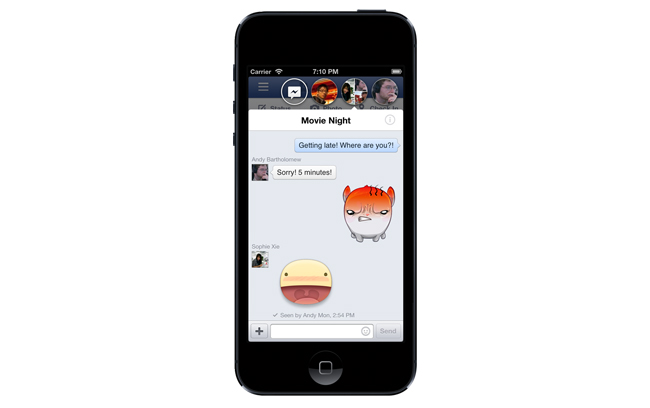
Facebook Home may not be available for iOS devices anytime soon (like we first thought it would), but iPhone and iPad users will get a taste of its most interesting parts, at least. The official announcement included a peak into the huge emoji stickers that will also be made available for the social network’s iOS app. If that feature doesn’t quite appeal to you, that’s OK – they will surely excite Facebook’s Asian users – all 153 million of them who use the social networking site on a daily basis.
Messaging applications like Line and Path have utilized the sticker feature from the get-go, while Facebook is tapping into its popularity only now. Line in particular was even named the highest-grossing social networking app in the world by AppAnnie, and it could very well be thanks to stickers they offer for sale. These apps have experienced incredible popularity in Asia, where market-bigtimers (like WhatsApp) got their start as well. Clearly, social apps are being built differently and experiencing insane growth in this sector, and Facebook is taking notice.
The fact that a large number of users are more than willing to pay for using the feature in other chat applications looks like something Facebook ought to consider to increase their profits, if not for their Asian market specifically. The stickers included in the Facebook iOS app update are currently available for free, but their announcement of the feature alludes to a “sticker store” that could potentially get a monetization stream going for them.
Facebook is steadily coming up with mobile apps and updates, and some of them have failed miserably. The company’s attempt to join the sticker fad may very well fade in the wind, as it is a market that already has more successful players (and we really don’t know for sure if it’s a trend that can catch on in the U.S. market). Hopefully its inclusion alongside the chat heads function for the Facebook iOS app will enable it to remain in the foreground; this guy can help come up with potential iOS app upgrades that will stick (pun intended) as well.
Editors' Recommendations
- How to remove location data from your iPhone photos
- Instagram mulls iPhone widget for easier account switching
- Facebook says iOS 14’s new privacy tools could harm its ad business


